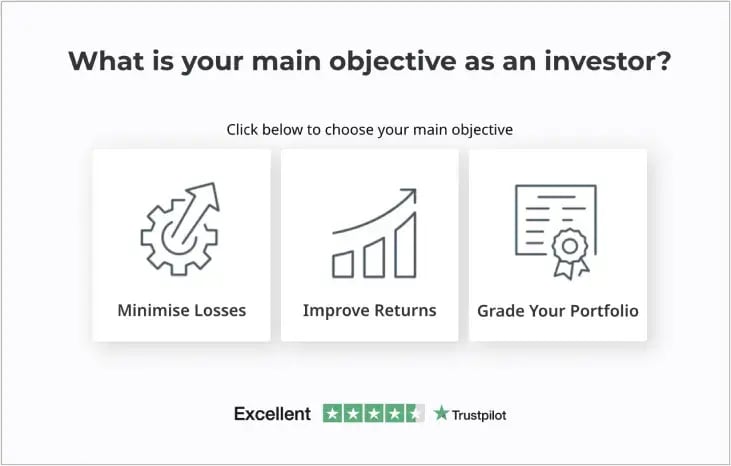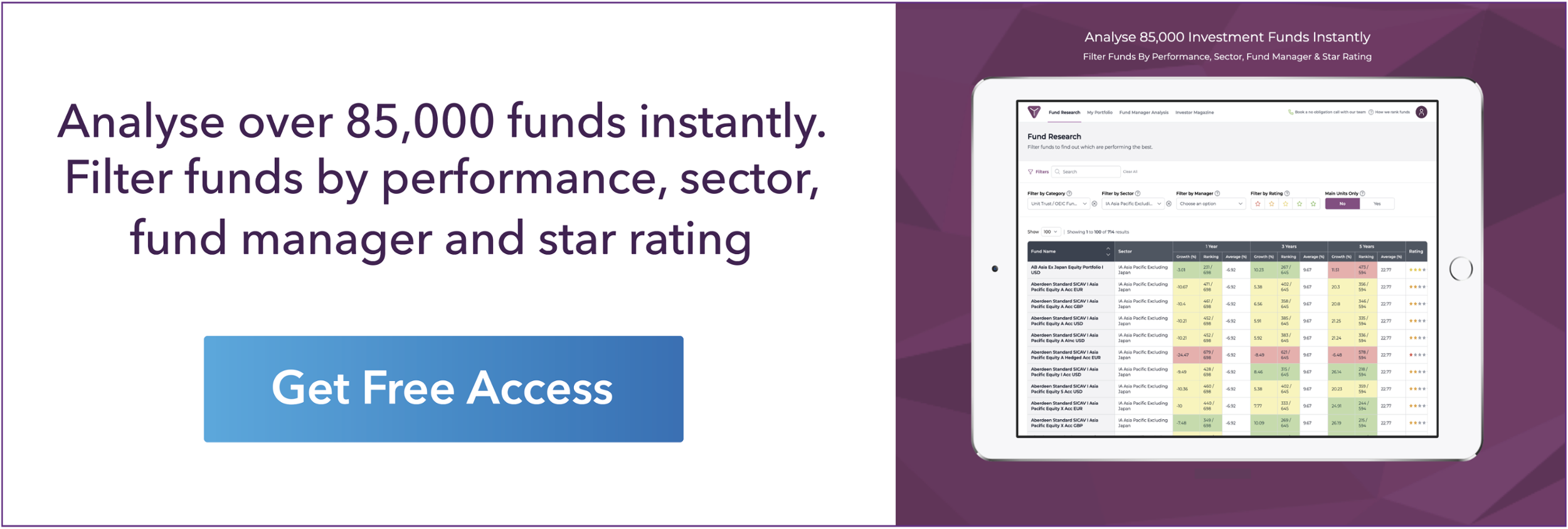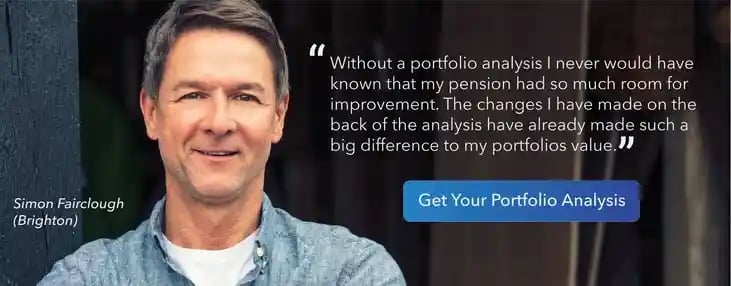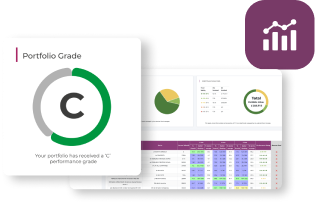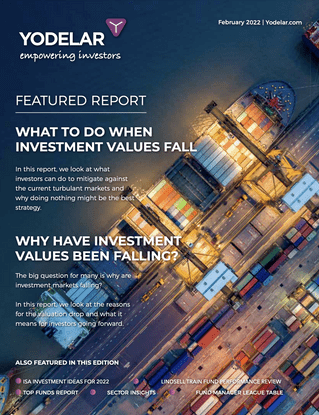"There are more poor quality funds than good quality funds on the market. The panic of the past year has meant there is now more money invested in poor quality funds than there was over 1 year ago."
The high volatility of the past year caused panic amongst investors and advice firms. Many sold off quality funds at a sizeable loss and replaced them with funds they hoped would stop or at least slow the falling value of their portfolio.
Since markets bottomed in the last quarter of 2022, many investors now find themselves invested in a portfolio that could do them more harm than good.
In this report, we explain how the panic manifested from the bear market of 2022 led many investors and advice firms to make changes to portfolios which will now limit future growth potential and expose investors to higher levels of risk than they ever intended.
2022 Was A Year Of Panic Decisions
The sharp market declines of 2022 and the high levels of volatility across almost all core markets led many investors and portfolio managers to make widespread changes to their portfolios as they sought shelter from further losses.
There were 2 main paths taken by those who decided change was the best way to navigate the poor market conditions. (1) chase returns by loading into the high growth funds of the moment such as commodities or funds in the energy sector, or (2) lower volatility exposure and therefore the risk of more losses by moving into funds that were less exposed to high volatility. For some, particularly those closer to retirement, the second strategy was adopted. This was typically done by filtering funds into categories based on the types of companies they own holdings in. While the distinction between funds can be detailed, in 2022 it was simplified to 2 categories - growth funds and value funds.
Growth funds seek to own holdings in companies that offer strong earnings growth, typically companies that have a strong, dominant position in their industry.
Value funds own holdings in companies that are not doing well in their marketplace but are deemed attractive by their low valuations. Their low valuation is because they have a lower market share and therefore less to lose than their more dominant competitors. In volatile markets this can lower losses but in the long term it can also lower returns.
The reality is that the investment decisions of many investors and advice firms this past year was based on whether a fund was labelled as a growth fund or a value fund.
In the long term this could be a costly mistake to investors. The significant majority of value funds are among the worst performers in their sectors as they essentially contain holdings in lower quality companies. By default these funds may experience a lower drop in value during volatile periods but their poor quality holdings means they often offer much less growth during less volatile or bull markets.
Many investors were invested in growth funds, saw funds drop during volatility , moved into value funds, and now as markets and growth funds recover and grow as they have been doing lately, the same investors are getting minimal growth consolidating previous losses, and potentially hurting the medium term returns of their portfolio.
63% of funds on the market have a history of underperformance (they consistently rank in the bottom half of their sector for performance over the past 1, 3 & 5 years). In contrast, just 16% of the 4,000 funds available to UK investors consistently outperform their sector peers.
There are much more poor quality funds on the market than there are good, and the panic of the past year has meant there is now more money in poor quality funds than there was just over 1 year ago. This is something that could have a huge consequence for investors going forward.
Following investment trends can lead to decisions that have a bigger negative impact on portfolio values than the reason that prompted those changes.
The Pursuit of Returns That Could Lead To Losses
In 2022, the MSCI World Index averaged negative returns of -20% as almost all sectors and markets were hit by highly volatile conditions in the aftermath of the covid pandemic and Russian invasion of Ukraine. But not all markets experienced losses. Energy related industries experienced a huge rise in value with the MSCI World Energy Index growing by 47.6% in 2022. One of the main financial consequences of the war in Ukraine and subsequent sanctions was the sharp rise in commodities and energy prices which resulted in the funds in this sector to grow significantly in a short period of time.
With such significant growth combined with almost all other markets experiencing negative returns it was unsurprising to see some investors shifting focus to energy and commodity focused funds, such as the funds listed in the IA Commodities & Natural Resource sector.
As the largest growth sector for much of 2022, the Commodities and Natural Resources sector attracted huge interest from investors looking to capitalise on rising values and over the course of the year investment in the sector rose by a huge 27%.
However, the energy sector is notoriously volatile and prices can change quickly. This volatility can have a massive impact on the sector, as well as on the global economy.
We’ve seen this firsthand in recent years. Oil and natural gas prices plunged during the early days of the pandemic as demand dried up. However, they rebounded sharply in 2021 as consumption recovered. They continued their ascent in 2022, hitting multi-decade highs after Russia invaded Ukraine.
But in the pursuit of gains we have identified an increasingly large proportion of investors through our portfolio analysis service that have invested in energy and commodity funds, many allocating a sizeable portion of their portfolio to these funds. In doing so, many investors are unaware that they have increased the overall risk level of their portfolios. This is an extremely risky strategy that if not well managed could result in huge losses. To also invest with the aim of benefiting from a potentially short lived growth spurt is to try and time the market, which is the worst strategy any investor could deploy.
Never Try To Time The Markets
Trying to time the market is almost impossible. In an ideal world, you would ‘buy the dips’; but in reality, there is no way of really knowing whether markets have reached rock bottom and when recovery will occur. The practice ‘buy low, sell high’ is something that only professional investors should attempt. Do it wrong and you could miss the market’s best days, ending up significantly worse off.
The chart below shows the impact of missing the market’s best days on a £10,000 investment in the FTSE All Share between 1989 and 2022. If you kept your £10,000 invested throughout, it would have grown to £140,287 by the end of the period, assuming dividends were reinvested and before fees. However, if you tried to ‘buy low, sell high’ and missed the market’s 30 best days, your investment would have increased to just £33,872.
Investing during volatile periods and watching your investment values drop can obviously be very stressful but as an investor, this is part of the journey. Investment markets do not always grow, but they have always grown more during bull markets than they lost during bear markets.
Throughout history, remaining invested during all cycles has always rewarded investors with positive growth. Therefore, it is vitally important that after experiencing a market crash, such as the one endured this year, that you remain invested during the recovery.
Markets will recover the losses they have endured in 2022, but as the table above shows, trying to jump in and out of a sector or market will often result in lower overall returns.
It can be hard to appreciate in the midst of high volatility and market uncertainty, but bull markets follow bear markets and often erase the declines sooner than most anticipate. Therefore, unless your portfolio contains poor quality funds, the best thing to do is to ride out bear markets.
Related Articles:
What To Do When Investment Values Fall
The Danger of Timing Investment Markets
Only Make Informed Decisions
Markets dropped last year due to a culmination of factors, which combined created an environment of uncertainty and fear - emotions that will almost always exacerbate negative conditions. But it is important during negative investment cycles not to lose sight of the fact that conditions will always improve, and growth will always return.
Fear is the enemy of investing, it is an emotion that often supersedes rationale and increases the risk of making decisions that could negatively impact a medium to long-term strategy.
It is worth reminding ourselves every so often why we invest. This may seem somewhat obvious, but during times of investment stress it can help to avoid fear driven decisions and settle anxieties.
Most investors will have at least a 5 year investment horizon. (If someone's timeframe is lower than this then they should seriously consider other options or be in full acknowledgement of the risks with short term investments).
During times of investment stress it is useful to remember the following:
1. The reason you invest a proportion of your wealth is so that over a defined period of time it grows in value to meet your defined investment objectives. For most, this will be a long-term strategy (10 years or more).
2. During an investment journey you will experience periods where the value of your investments fall. This is and will always be a part of investing.
3. It is only the value of your portfolio at the end of the defined time period that matters. Anything in between, is all part of the investment journey.
Check Your Portfolio For Inefficiencies
The bear market of the past year has resulted in some investors and advice firms making decisions that have increased their portfolio risk and limited future growth potential. But through our unique portfolio analysis service you can easily identify if your investments are performing well and if your portfolio is on the right track.
Get your free portfolio analysis with Yodelar and gain a detailed insight into the performance of your investments and identify how competitive your portfolio and the funds you are invested in actually are.
Benefits Include:
- Identify the performance of each fund you are invested in
- Where each fund ranks within their sectors for performance over 1, 3 & 5 years
- Yodelar performance rating for each fund between 1 and 5 stars
- The proportion of your portfolio that is invested top quality or poor performing funds
- How your portfolio growth compares to a similar risk Yodelar portfolio of top-performing funds
- Receive an overall performance grade for your portfolio between A and F
Our portfolio analysis service provides a clear insight into how each of your individual funds is performing while grading your entire portfolio based on its overall performance - making it easy to identify areas for potential improvement.
Invest With Quality Fund Managers
9 in 10 of the funds available to UK investors are poor quality, long term under performers. They underperform over the long term as many invest heavily in stagnant industries and lack the foresight to adapt in time to changing consumer trends.
For example, growth of the electric car market has grown exponentially in recent years as technology improves the quality of electric vehicles and with greater emphasis on the climate crisis the UK government legislation aims to ban sales of new combustion engine vehicles from 2030; and the European Commission has proposed a carbon emissions-cutting scheme that would effectively see the EU follow five years later. This obviously has significant implications for the motor industry and creates huge opportunities for investors beyond that of simply investing in electric car manufacturers such as Tesla.
Quality fund managers exploit industry channels to identify the core innovation routes and identify key markets such as the sub companies closest to these routes and the structure and dexterity of these companies. This is what sets them apart when it comes to putting in place proficient investment strategies to outperform their peers.
For example, plans to accelerate the switchover to electric cars mean we’ll soon need many more charging points. You might think that entails a rush to retrofit petrol stations with banks of charging bays. But, research shows that the home and workplace are expected to become the key plug-in locations with development in this area expected to result in more advanced and convenient charging units. Public power points will still be required, for instance, to top up electric cars making long journeys. But many will be at places focused on other activities. It is the hardware and software companies at the forefront of this development, and in sub industries connected to the EV market which are viewed by many quality fund managers as the real opportunities that have exponential growth opportunities.
The growth potential of such strategies is not always evident during volatile markets which is why short term performance should never be the main factor for making investment decisions. Instead, investors should trust in the long term opportunities that come with investing in quality funds and fund managers.
Moving from a quality fund to a lower quality fund because it dropped less during a bear market is to expose yourself to missing out on much more in future growth. This is the reality for many investors after the decisions of 2022.
Fact Based Investment Decisions
Making decisions based on fear or trends are among the biggest derailers of investment plans. Most investors understand the importance of remaining disciplined at times of heightened uncertainty, but very few succeed in staying calm in turbulent markets. Indeed, many end up taking exactly the wrong course of action that could have significant long term implications for their investments.
The strength of any investment plan is in its composition. Best practice shows that a portfolio should be diversified and have a robust asset allocation model that is strategically weighted to fit each individual appetite for risk and contains only suitable top performing funds. Outside of this, everything else is noise.
There will always be contradicting market forecasts from industry experts who have different outlooks and reasons for their opinions. But opinions are really all market forecasts are, which is the reason why they should not interfere with your investment plan.
Is Your Portfolio Optimised For The Future?
Investing, like many aspects of life, isn't always straightforward and for some it can be more uncomfortable and stressful than others. As an investor, you will always be exposed to factors that can cause values to rise and fall. Investing can result in emotional decision making, but the investors who reach their objectives efficiently are typically those who have a disciplined and pragmatic approach to investing, and follow a structured, long term strategy. When this is followed better outcomes can be achieved.
The development of our portfolios comes from years of research and analysis that included the consistent assessment of more than 100 fund managers, tens of thousands of funds and more than 30,000 investment portfolios. Our research continues to identify that a small proportion of funds and fund managers consistently delivered top performance, with more than 90% of the portfolios we review containing funds that continually underdeliver. This research has enabled us to identify efficient processes and top-quality investments which we have utilised to create 10 strategically balanced, risk-rated portfolios that are built using only the top funds within each asset class and offer investors phenomenal potential for growth.
Yodelar provides an advice and information service that is changing the way investors think. Book a no obligation call with our team today and find out how we can help you grow your wealth efficiently.



